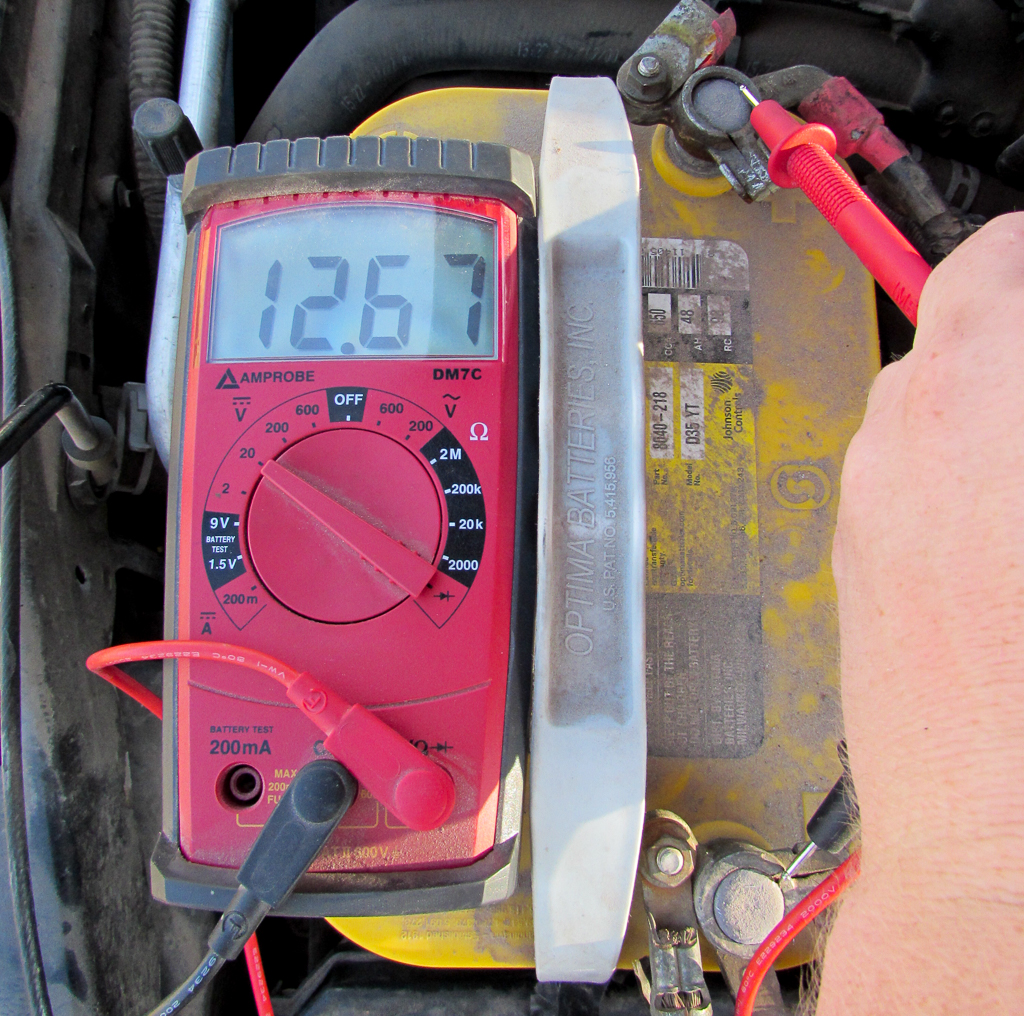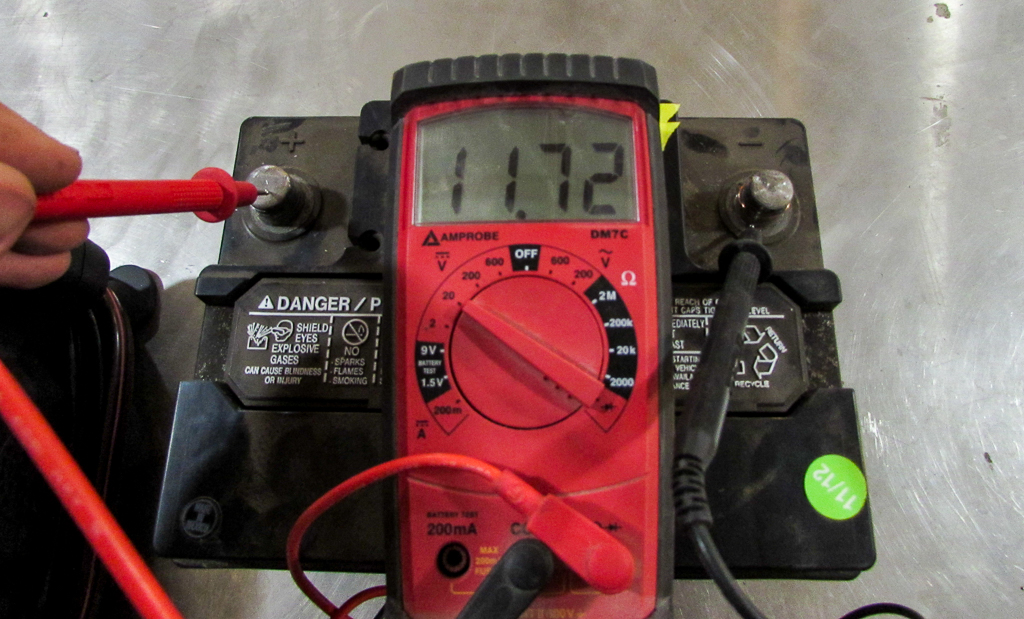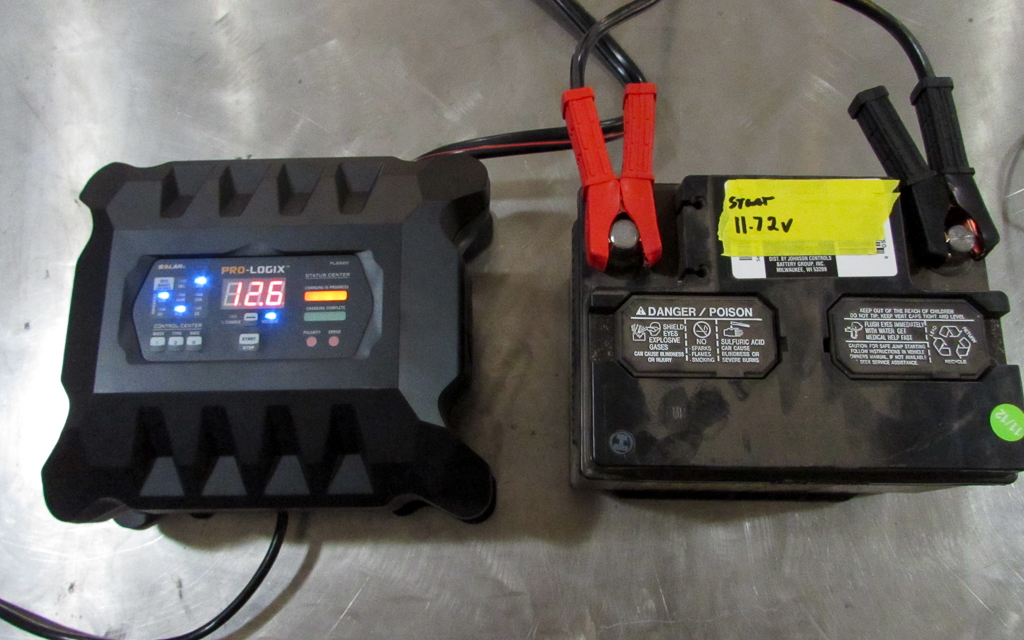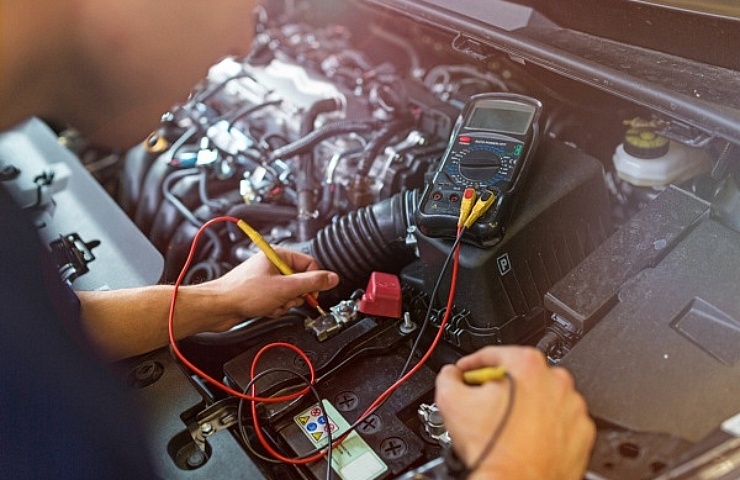Contents
Most vehicles on the road use 12-volt electrical systems.
- Passenger vehicles and light-duty trucks use a 12-volt system.
- Vehicles built before the late 1950s used 6-volt systems.
- Some vehicles use 24-volt systems—mostly military vehicles, large trucks, and buses.
While it is called a 12-volt system, it is actually not that simple. There are two voltages that you need to know for vehicles. The battery itself, which is the focus of this article, is a 12-volt (or 12V battery). This is the nominal resting voltage when the battery is fully charged and not in use.
When you start the engine, the alternator takes over, increasing the voltage to 14.4 volts. The alternator bumps up the voltage to supply the vehicle with the required power and simultaneously charge the battery.
- If the battery is above 12.0 volts, it should be in good condition.
- When a battery at rest is below 12 but above 11.4, it is slightly discharged but will start most vehicles.
- Under 11 volts may start an older carbureted engine without an electric fuel pump or ECM, but that’s not enough for a modern engine. There are just too many electrical components that need juice to crank up.

A car battery at rest with the engine off should read in the mid-12s.
Voltage is only half of the story. The amperage of the battery is equally important.
Voltage is the carrier for the current (rated in amperage), so even though your battery may read as having 12 volts, internal issues could keep it from generating enough amps to crank your engine. Batteries are different sizes based on the amperage requirements to start the engine in the vehicle. The smaller the battery, the lower the amperage requirements.
Read: Why Your Car Won’t Start
How Do You Check Battery Voltage?

This battery reads below 12V. It might start an engine but it’s slowly discharging.
There are several ways you can check your vehicle’s battery voltage. The easiest way is to use a digital multimeter (DMM) set to DC volts in the 20-volt range.
- Open the hood and locate the battery.
- Turn on your DMM and set it to DC volts. If it has selectable ranges, set it to 20 volts.
- Touch the positive lead to the battery positive post and hold it there. Touch the negative lead to the negative battery post and hold it.
- Read the voltage on the DMM. This is your battery’s resting voltage.
Battery Load Test
Another way to test your battery is with a battery load tester. This is a more thorough test because it can tell you the strength of the battery and the voltage. This is the best way to test a battery’s amperage.
- Open the hood and locate the battery.
- Connect the positive clamp to the battery positive and the negative clamp to the battery negative.
- The needle (or screen if you are using a digital tester) will show if the battery has enough voltage to start a vehicle. Gauges vary by manufacturer.
- Click the load button or switch to put a test load on the battery. This will test the battery’s amperage and let you know if the battery has enough stored energy to start an engine.
Should You Charge Your Battery If the Voltage Is Low?
You absolutely should charge a battery with low voltage. Lead-acid batteries are more delicate than most people realize. One deep-discharge event (going under 10 volts) can significantly reduce the battery’s capacity. It can even cause the plates inside the battery to reverse polarity, making it impossible to recharge again.

Car and truck battery charging is easy with a smart charger like this one.
Maintaining the charge on your battery will keep it in top shape for years and is the best way to store it. If you have a vehicle you do not drive daily, it should be connected to a battery maintenance trickle charger to ensure a fresh supply of juice rather than letting it slowly drain. This is also good advice for powersports and lawn equipment that use electric starters.
Shop now for battery chargersHow Does Battery Voltage Impact Vehicle Performance?
A common misunderstanding about batteries is that they go flat and get replaced, and it’s no big deal other than the cost. In reality, a dead or dying battery can cause your engine’s alternator to work much harder as it tries to charge the battery. This extra duty will kill an alternator quickly, often starting a cycle of failed parts. A dying alternator can kill a new battery, so you end up ruining even more parts.

Trickle chargers like this Battery Tender maintain voltage but aren’t powerful enough to charge a flat battery.
Additionally, the lack of current stored in the battery makes it harder for the engine to produce power. The battery is the fuel for the electrical system, just like gas or diesel is the fuel for the combustion process. Without a stable supply of either one, your engine just isn’t going to perform well.
Read: Tips for Changing Your Car Battery
Maintaining a modern vehicle battery is simple: Keep the posts clean and the terminals in good shape, and when the vehicle is going to sit for a while, put a trickle charger on it to keep the level up. A good flooded lead-acid battery (the most common type) will last for five to seven years. However, with one deep discharge, it is lights out for that one.





